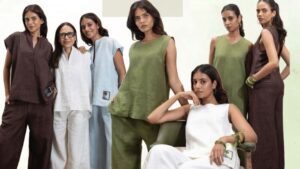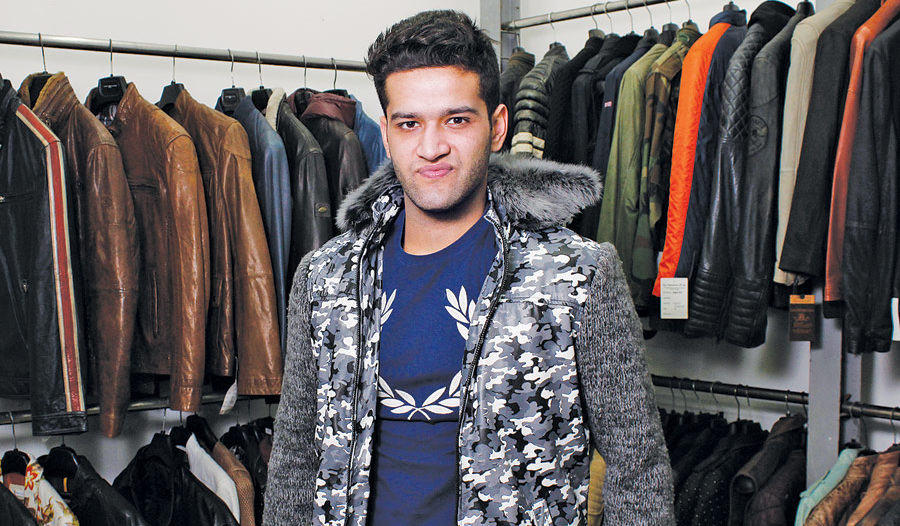
The status symbol, aspirational value and price points attached to a leather jacket make it a vibrant business opportunity. While in India this industry has been predominantly based in Chennai and Kolkata, the Delhi-NCR based Saru International is a 25-year-old veteran exporting jackets to Redskins, Nicole Miller, Tommy Hilfiger, Pepe Jeans, Zara, and Ed Hardy. In an exclusive interaction with StitchWorld, Abhinav Mago, Director of Saru International, highlights the process stream at his factory for manufacturing orders of 500 pieces of high-end leather jackets.
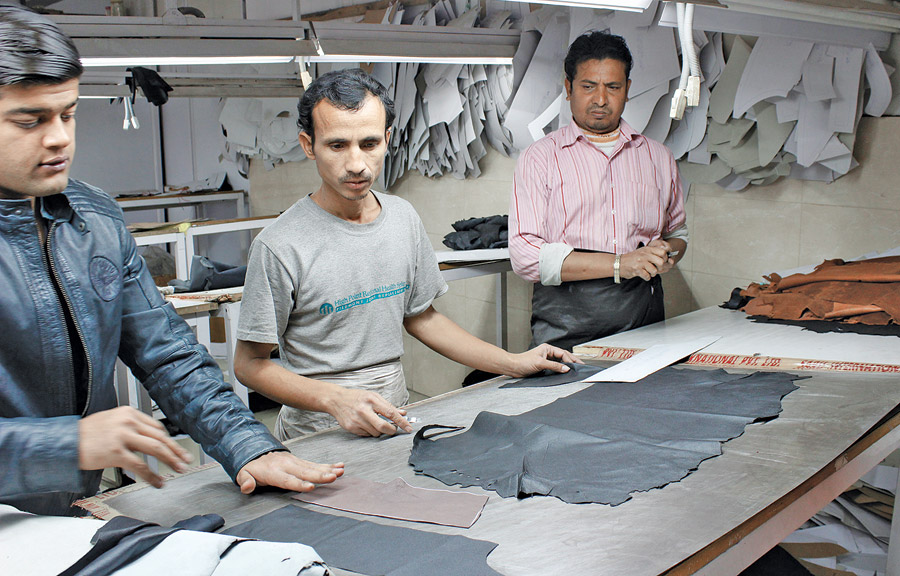
Fundamentally, a leather jacket is simply a product of apparel and yet the peculiarities attached to the commodity are so radically different from the fabric and the end apparel. Firstly, the hides or skins are very different from each other in terms of texture and colour. If one stitch is extra, or wrongly added, unlike any other textile material, the needle mark will stay forever – a sign for rejection is equivalent to losing US $ 200 which is the average FOB of one jacket.
Over the time, Saru International has overcome all such technical challenges by training its workforce for enhanced skill sets and using best of the machines, but still it is losing business to China, Pakistan and Nigeria. “Our business is down 50 per cent to US $ 4 million largely because of the shortage of labour and it’s compounded by the undisciplined or unproductive workers,” informs Abhinav.
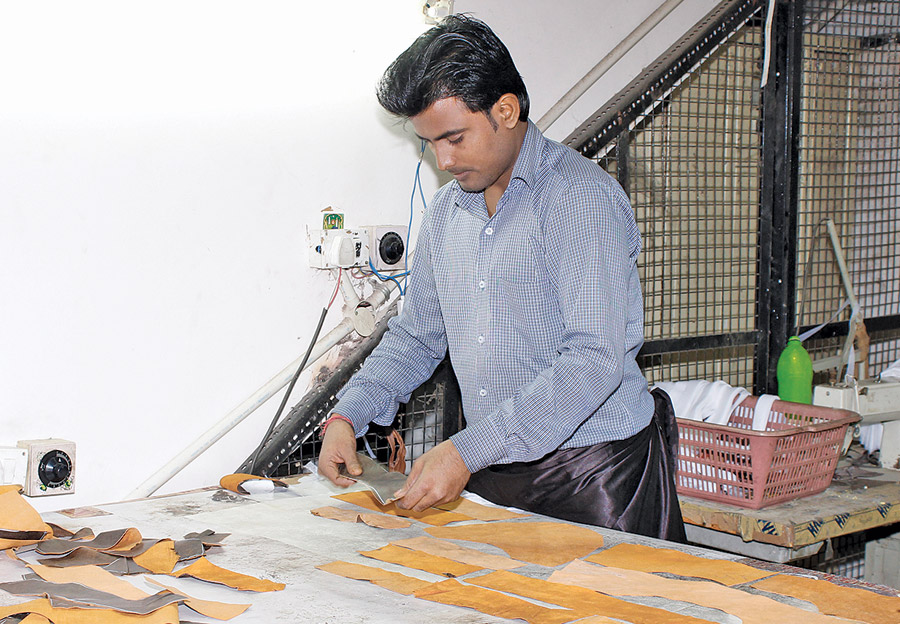
The Process
“Whatever joy we have today is because of having a tannery since it gives us the liberty to experiment in the area of product development and quality of output,” avers Abhinav while speaking of Saru’s tannery in Jaipur – which is again at an off-beat location. “It has been established in Jaipur for the sake of convenience,” he explains. Apart from being equipped with an ETP and a water recycling plant, it is located right on the highway, which takes care of connectivity, lead time and economic feasibility. Saru buys hides in ‘wet blue’ state – leather processed with Chromium dyes which gives it a pale blue colour – from Argentina and Spain. Thereafter, Saru tannery proceeds to colour it as per the buyer’s requirements. Abhinav has also been experimenting with digital printing on leather for value.
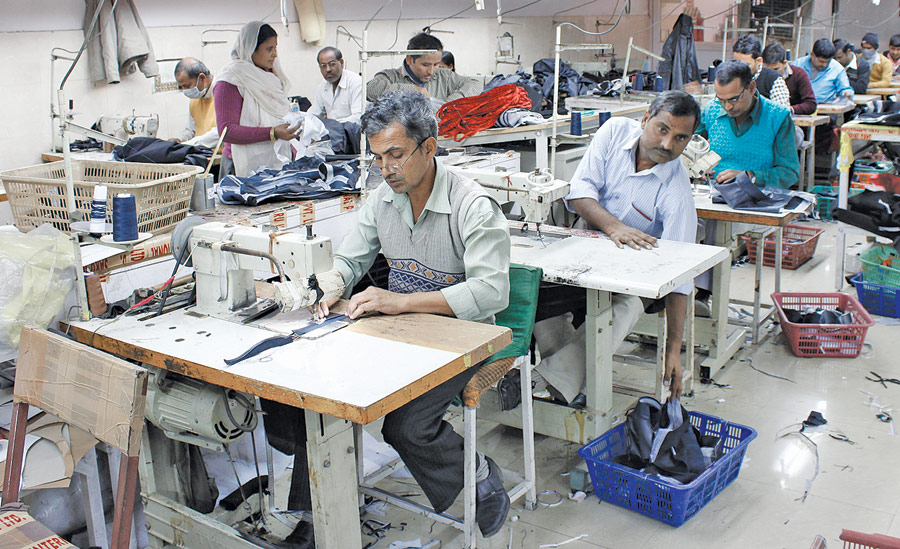
Putting together the jacket
Stocking close to 30,000 leather hides at any given time; order-wise in three qualities – A, B, and C, corresponding to leather with no imperfection, 5-20% imperfection, and 20% or more imperfection. This segregation helps in judicious use of the leather so that the areas with imperfection are not apparently visible to the viewer’s eye – mainly in areas such as collar band and the inner portion of cuff. “We try to minimize the difference. Our own QCs and buyers’ QCs collaborate to establish a shade band with acceptable tolerances,” explains Abhinav. The trims required in a leather jacket usually vary from buttons, zippers, and rivets to lining, and ribs, which the company sources from compliant vendors.
As per the figures released by the Ministry of Commerce, Government of India, during FY 2014-15, leather apparels worth US $ 604.5 million were exported out of India. Out of this, jackets and jerseys were worth US $ 458.7 million – accounting for a whopping 75 per cent share. The leather jacket trade however has fallen by 3.25 per cent, while the country’s total exports have shrunk by 1.29 per cent.
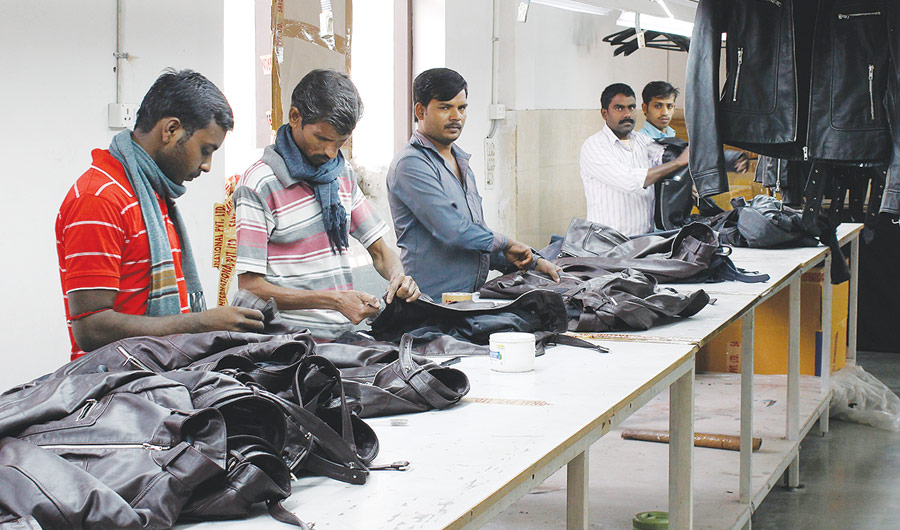
The operators use scalpels for cutting high-end jackets as the pieces cut using a scalpel have finer and more continuous edges. “Average skin consumption usually ranges between 6-7 skins per jacket,” informs Abhinav.
The cut parts such as the collar and cuff are fused, bundled and sent to the sewing floor which is arranged in modules of seven tailors. Each tailor specializes in sewing certain parts like sleeve making and collar making or certain operations like making lining, and assembly. The bundles are opened in front of the supervisor who checks if the skin has been cut properly and the texture is same or not.
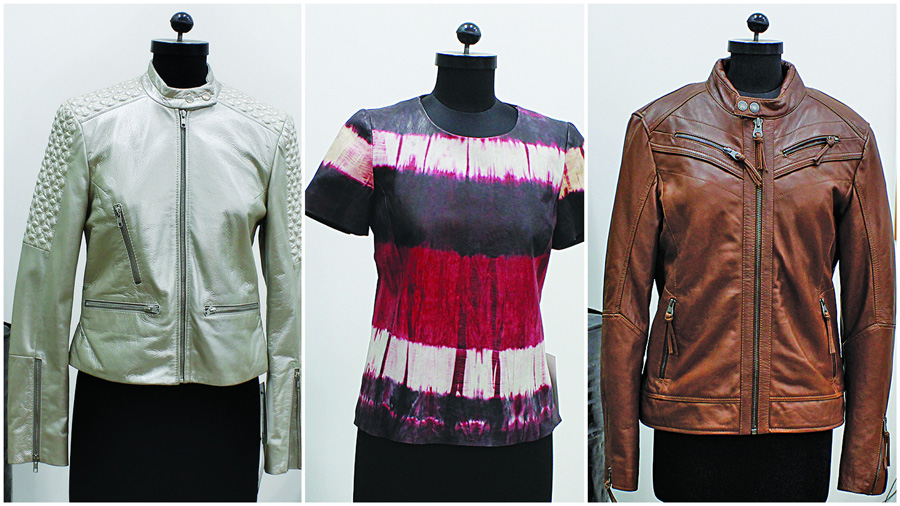
The most intriguing part is the finishing for the sheer variety of techniques that go in furnishing the final look of the jacket. First, the buttons and rivets are put on, and then the threads are cut. The final look is achieved by using methods like scorching with a lighter, brushing and buffing with Aloe Vera cream. Finally, the jackets are ironed and packed for delivery.


